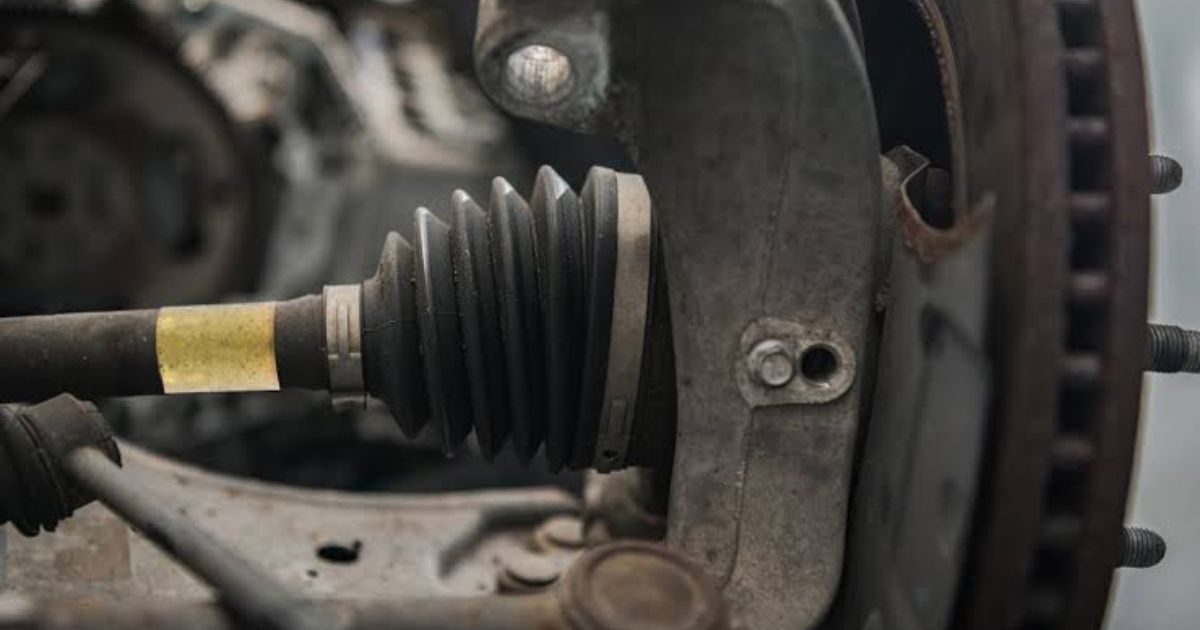Introduction
The constant velocity (CV) joint is an essential part of your vehicle’s drivetrain, allowing the wheels to turn while accommodating the up-and-down movement of the suspension. A failing CV joint can lead to serious driving issues, including loss of control. Identifying the warning signs early can help prevent costly repairs and potential safety hazards.
1. Common Symptoms of a Bad CV Joint
A failing CV joint typically exhibits several noticeable symptoms. Here’s what to look for:
🔹 Clicking or popping noises when turning – A loud clicking sound, especially when making sharp turns, is a strong indicator of a worn-out CV joint.
🔹 Grease leakage around the CV boot – If you notice grease splattered on the inside of the wheel or axle, it could mean the CV boot is torn, allowing dirt and moisture to damage the joint.
🔹 Vibration while driving – A damaged CV joint may cause excessive vibrations in the steering wheel or floorboard, worsening as speed increases.
🔹 Knocking sounds while accelerating or decelerating – A rhythmic knocking sound may indicate inner CV joint failure.
🔹 Difficulty turning or loss of power to wheels – A severely worn-out CV joint can result in unpredictable handling or even loss of power to the wheels.
2. How to Inspect a CV Joint
Step 1: Perform a Visual Inspection
✔️ Check for grease leaks around the CV boot. ✔️ Look for cracks or tears in the rubber boot. ✔️ Inspect the CV axle for any visible damage.
Step 2: Listen for Noises During a Test Drive
✔️ Drive in a parking lot and make slow, full turns left and right. ✔️ If you hear clicking or popping sounds, the outer CV joint may be worn. ✔️ Accelerate and decelerate in a straight line to check for knocking sounds from the inner CV joint.
Step 3: Check for Excessive Play
✔️ Jack up the vehicle and safely support it with jack stands. ✔️ Grab the CV axle and wiggle it by hand – excessive movement can indicate wear. ✔️ Rotate the axle and listen for grinding or unusual noises.
3. What Causes CV Joint Failure?
❌ Torn CV boots – Exposed joints allow dirt and moisture to cause premature wear. ❌ Lack of lubrication – CV joints require grease to function properly. ❌ Rough driving conditions – Off-roading or hitting potholes can accelerate wear. ❌ Age and mileage – CV joints naturally degrade over time, especially in front-wheel-drive vehicles.
4. When to Replace a CV Joint
If you experience clicking noises, grease leakage, or vibrations, it’s best to replace the CV joint before it fails completely. Some vehicles allow for CV joint repair, while others require replacing the entire CV axle assembly.
DIY vs. Professional Repair
🔹 DIY Replacement – If you have mechanical experience, replacing a CV axle can be a DIY job with the right tools. 🔹 Professional Repair – If you’re unsure or lack the necessary tools, it’s best to have a mechanic replace it.
Final Thoughts
A failing CV joint can lead to dangerous driving conditions if ignored. Recognizing the warning signs early can prevent expensive repairs and ensure safe driving. Regular inspection and maintenance of CV boots can help extend the life of your CV joints.
Would you like recommendations for CV joint replacement kits or tools?
